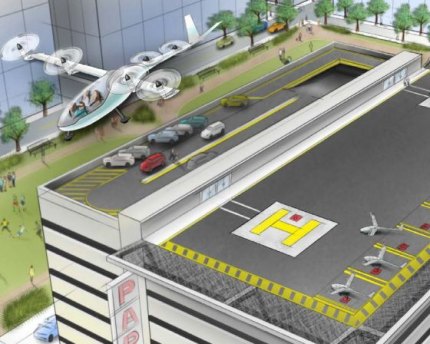
This week, Uber Technologies Inc. made headlines when Bloomberg News reported the company had hired Mark Moore, a NASA aerospace engineer, to work on flying cars. But Uber isn't the only firm looking to the future.
From trainlike vehicles that would shoot through a tube to jetpacks, high-tech companies are exploring different modes of transportation to usher in a new transportation age. Here are three examples.
Air taxi: We all know Uber Technologies as the company whose drivers use their own cars to earn money while giving others a ride. Uber also is testing self-driving cars in Pittsburgh. But its Uber Elevate project is focused on developing a flying car.
"On-demand aviation, has the potential to radically improve urban mobility, giving people back time lost in their daily commutes," reports an Uber research paper published in October. A network of small, electric aircraft "will enable rapid, reliable transportation between suburbs and cities and, ultimately, within cities."
The aircraft is called VTOL (pronounced vee-tol) for Vertical Take-off and Landing. Of course, there are already helicopters. But helicopters are noisy, the company notes. "VTOL aircraft will make use of electric propulsion so they have zero operational emissions and will likely be quiet enough to operate in cities without disturbing the neighbors."
Uber believes flying cars will eventually be affordable. But a more sophisticated air traffic control system will be needed. Researchers foresee "a significantly higher frequency and airspace density of vehicles operating over metropolitan areas simultaneously."
My Jetpack, please: A New Zealand company, Martin Jetpack, has designed a personal aircraft (also a VTOL) initially intended for rescue personnel. "This is because it will take some time to get the regulatory approvals for more widespread use, such as commercial or private activities," according to a company news release. The Jetpack is powered by a gas engine, runs at speeds of 25 mph and can reach altitudes of 2,500 feet above mean sea level. (And yes, there is a parachute.)
Hyperloop: Last month, SpaceX hosted a Hyperloop Pod Competition outside the the company's Hawthorne, California, headquarters. Still in development, this would be a super-fast method of travel in which pods would shoot along on a bed of air. In the long run, the Hyperloop could provide a rapid and environmentally friendly way to travel. There will be a second competition this summer, according to the company.
To know more:
Uber Technologies: Fast-forwarding to a future of on-demand urban air transportation, by Jeff Holden, chief product officer for Uber Technologies, and Nikhil Goel, product manager, Uber Elevate and Advanced Programs.
Related:
Testing to begin on super-fast hyperloop
SpaceX contest prods "Hyperloop"
Follow StudyHall.Rocks on Twitter.
If you would like to comment, give us a shout, or like us on Facebook and tell us what you think.